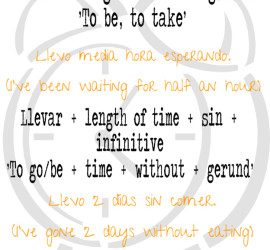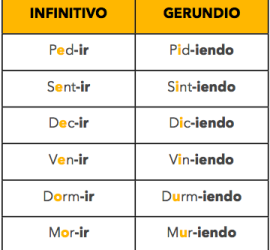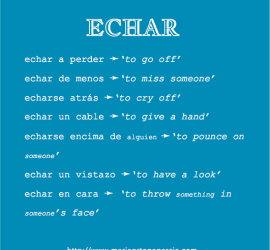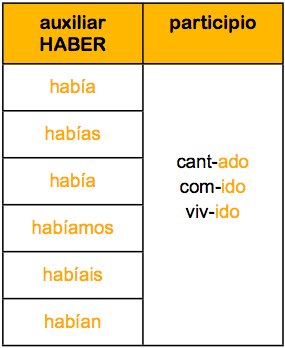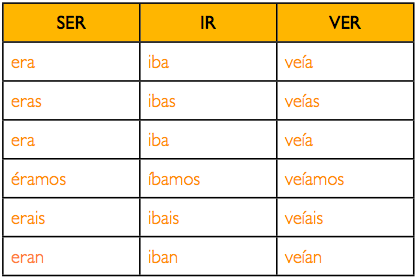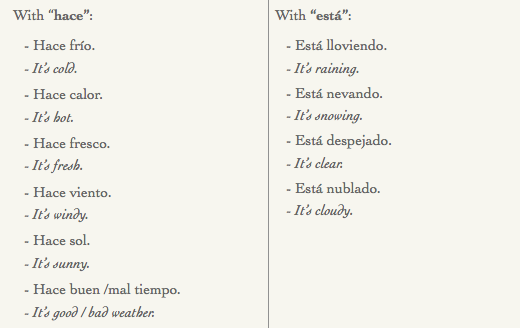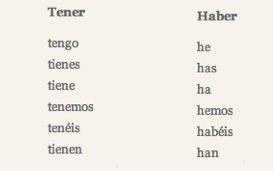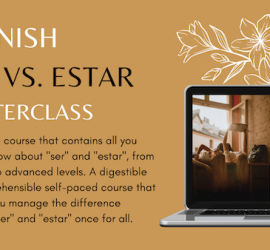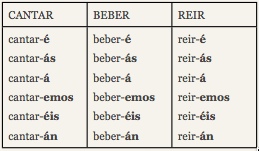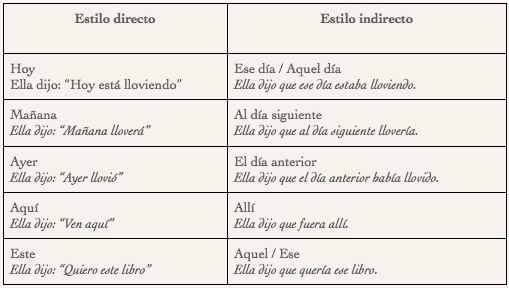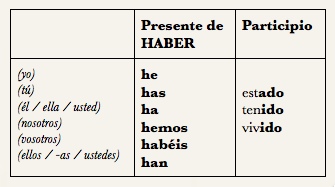Video
Spanish Relative Pronouns – QUE
Remember, pronouns are words that refer to a noun. Relative pronouns are called “relative” because they are “related” to a noun that has previously been mentioned. One way to view relative pronouns is to recognise that they combine two sentences that share a common noun. In the following example, the […]
Indicative or subjunctive with Verbs of Perception and Understanding
Subjunctive is one of the three moods in the Spanish conjugation of verbs, along with Indicative (used for objective facts) and Imperative (this is the one we use for the commands and orders). The moods in the conjugations refers at how the speaker feels about an action while the tense […]
Verbs of transformation (Verbos de cambio) 2
Spanish has many verbs that are used for specific types of change or transformation, and if the change is sudden or involuntary. Many of those verbs mean “to become” in English but in Spanish they are not interchangeable because they have very specific meanings for particular situations. The next four verbs […]
Three verbs to talk about length time in Spanish: “tardar”, “llevar” and “durar” 8
Do you know how to use the verbs “tardar”, “llevar” and “durar” in time expressions? Their use is fairly common to express how long it takes to do something, how long something goes on for or how long something has been going on. Let’s see the best way to use […]
Gerund in Spanish (form and uses) 1
Gerund. And what’s that? FORM We make it by replacing the endings “-ar, -er, -ir” of the infinitive with -ando (verbs that ends in -ar) or -iendo for the verbs that end in -er, -ir Note: if the stem of the verb ends in vowel, ie. caer — ca-er, the […]
“Echar”: 7 meanings + 7 common expressions
“Echar” is a very tricky but I’m here to help! 🙂 If you look for the meanings of “echar” in the RAE (Royal Spanish Academy Dictionary) you will find about 48 meanings and as many expressions that use this verb. But despite all this abundance of meanings, the idea of […]
Uses of the 4 Past Tenses in Spanish 6
https://www.youtube.com/watch?v=dgLzfN_37AkIn previous posts you have learned about how to talk about the past, and you learned how to form and use the Pretérito Perfecto (Present Perfect), the Pretérito Imperfecto (Past Continuous), the Pretérito Indefinido (Past Simple) and Pretérito Pluscuamperfecto (Past Perfect). Now you have all the tenses required to talk […]
Talking about the past (IV): Pluscuamperfecto de Indicativo (Past Perfect) 6
In previous posts we have learnt about the “Pretérito Perfecto”, the “Imperfecto” and the “Indefinido”. In this post we are going to learn how to form and use the “Pluscuamperfecto”, the last of the past tenses in Spanish. In a next post we will learn how to use all the […]
Irregularities of the Pretérito Indefinido tense in Spanish. Talking about the past (III) 14
A few days ago, a follower of my Facebook page asked me for help with his personal nightmare in Spanish. For him, the irregular verbs in the Pretérito Indefinido (Past Tense) were just something he couldn’t understand, so he wrote me a few lines asking me for some tips. As […]
Uses of a nightmarish couple: “quedar” and “quedarse” 14
Today I’m determined to solve one of my students’ worst nightmare. (cheers and applauses…) When do we use “quedar” and when “quedarse”? What does it mean “quedar”? and “quedarse”? These two verbs have completely different meanings and uses, let’s take a look at them: Quedar Quedar has a few meanings: […]
Describing personality in Spanish 2
We will learn some vocabulary related to describing someone’s personality in Spanish. When we want to ask about the physical aspect and the personality of someone we don’t know, we ask a general question: ¿Cómo es? (How is he / she?) But if we are just curious about the personality […]
Describe in the past (Pretérito Imperfecto de Indicativo) 4
The Imperfect – Pretérito Imperfecto – is used to talk about the past in Spanish. In the majority of situations, when we use the imperfecto is not to give the main information but to give the context that surrounds the main information. El pasado fin de semana estuve tomando el […]
Cultural Festivities – Spanish Christmas (I) 18
Ho, ho, ho The Christmas season has come. And since learning a language is much more than learning some vocabulary and structures, I am determined (and delighted) to showing you some of the cultural aspects of this Christmas season in Spain, which will be very helpful to understand the Spanish […]
“¿Qué haces todos los días?” Talking about your daily routines 1
¿Qué haces todos los días? ☞ What do you do every day? All of us we have some routine daily activities that we do every day. If you’d ask me the question ¿Qué haces todas las mañanas? My answer would be in the following lines: Me levanto a las 9 de la […]
Forms of address in Spanish – Uses of the pronouns “ustedes / vosotros” 1
As a petition from one of the followers of my Facebook page Online Spanish Tutor (Check it out to learn daily idioms and expressions and post questions or suggest topics you want to learn about in this blog) I am going to dispel all doubts about the use of […]
¿Qué tiempo hace? – Talking about the weather in Spanish 2
Talking about the weather is a very handy topic in every language when you don’t know what to say. Here, I am going to give you all the vocabulary necessary to solve any uncomfortable silence in the lift. But before we get into that, let me tell you that “weather” […]
One verb, multiple uses ¿Vale?
This verb, valer, has different meanings in Spanish. 1. It’s used to ask for the price. It’s is accorded with the item whose price we want to know. Valer = ‘To cost’ – ¿Cuánto vale este bolso? How much is this bag? – ¿Cuánto valen estos zapatos? How much are […]
Pedir o Preguntar: solving a confusing verb pair (II) 1
As we saw in a previous post, there exist few confusing verbs in Spanish. In this post I will take the doubts out of “pedir” and “preguntar”. Both verbs express the idea “to ask” reason why they are often mixed up by the Spanish learners. The choice of one […]
Other ways of talking about the future (II) 1
As I explained in a previous post, when we want to talk about the future in Spanish we can use the future simple (or “futuro imperfecto de indicativo“) but this is not the only way we can resort to in order to talk about something that will happen in the […]
Tener or Haber: solving a confusing verb pair (I) 2
All Spanish courses focus since early stages in the learning of language in how to distinguish the scary verb pair “ser” and “estar” translated in english by just one verb, “to be”, however some of other confusing pairs are often overlooked only because they are used less often. That’s the […]
Bien or Bueno? Muy or Mucho? Erase any doubt! 19
This is a common question between the Spanish students and a great source of confusion so in this article you will learn to differentiate the two pair of terms and use them correctly. The simple answer is that one is an adjective and the other is an adverb, but that […]
Relative clauses in Spanish 12
Introduction In this post I will explain you the relative sentences in Spanish, which are the combination of two sentences that share a common noun, that means that one of the sentences gives more information, modifies or specifies the noun in common. Look at these examples: – ¿Has visto a […]
Express habits in Spanish: “soler” (suelo / solía) 1
In Spanish we have the construction “soler + infinitive” to express the idea that something usually occurs, that someone does something as a customary practice or regularly in present time, or that someone used to do something in the past but not anymore. This construction is equivalent to saying “used […]
The Conditional tense and how to make hypothesis 1
CONDITIONAL The conditional tense is frequently used to express the probability, possibility, wonder or conjecture and is usually translated as would, could, must have or probably. FORM 1. The stem is the same as for the future tense, that is, the infinitive form of the verb. 2. The endings are: […]
Hablar del futuro (I): Futuro simple 2
In Spanish, when we want to talk about the future we use the “futuro imperfecto de indicativo” or Futuro Simple. FORM The future is form adding the endings (-é, -ás, -á, -emos, -éis, -án) to the infinitive form of the verb. Same endings for the 3 conjugations. Like in the […]
How to give instructions in Spanish 1
There are 2 ways to give instructions in Spanish: Imperative afirmative Impersonal “se” <h2>Imperative Affirmative in Spanish</h2> The imperative is used to give orders, instructions, requests… The imperative has only 4 forms: <em>tú, usted, vosotros, ustedes</em>. Regular Remember that when the imperative is accompanied with pronouns, the pronouns are attached to […]
Talk about what others say: Reported speech in Spanish 11
We use the reported speech when we want to say what other people say, think or believe. There are two ways of report this information: Direct speech: when we transmit the original message word for word. We introduce the information with an introductory verb followed by inverted commas. Example: The […]
Taking the confusion out of “por” and “para” 1
This two prepositions “por” and “para” are frequently mixed up because they are often used for the English word “for”. They key to understand which preposition has to be used is to think about the meaning you want to convey. In this post I’m going to show you the major […]
Talk about the recent past in Spanish: Pretérito Perfecto de Indicativo 7
To talk about past experiences in an undefined time in the past, whether we don’t know exactly “when”, or just because it’s not important, we use the “Pretérito Perfecto de Indicativo” (Present Perfect). The pretérito Perfecto in Spanish is the tense used to talk about the recent past. However, it […]
The gender and number of nouns in Spanish 1
All nouns have gender (masculine or feminine) in Spanish. Now, how can you recognise if a noun is masculine or feminine in Spanish? Watch the video below for a short and sweet explanation. Masculine or Feminine in Spanish? Let’s go into more detail. In the following part we will talk […]
Express necessity and obligation in Spanish (tener que vs. hay que) 4
We have two ways to express necessity and obligation in Spanish: tener que + infinitive hay que + infinitive. We have two ways to express necessity and obligation in Spanish: tener que + infinitive and hay que + infinitive. Look this examples: – Homer Simpson tiene que ponerse a dieta. […]
More than words
What would you think if you see me doing the gesture of pointing my finger to the temple and moving it in circles? For me, it’s clear that I want to express someone is crazy, but if I were in the north of Europe I could be in trouble […]
The stages of language acquisition 1
Few days ago I came across this video while my research for inspiration for a post for my blog. I really loved it, it’s so clear that you don’t even need to read the text in the video or my post, even, because a picture is worth a thousand words, […]


